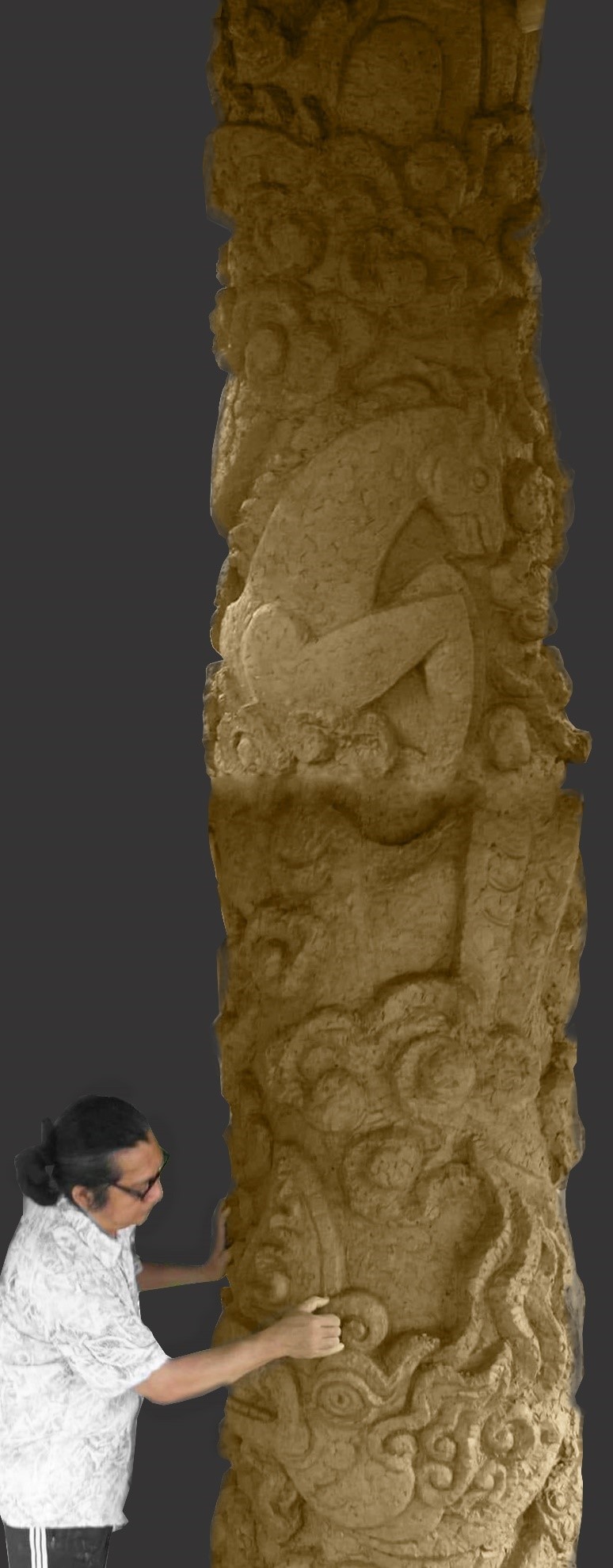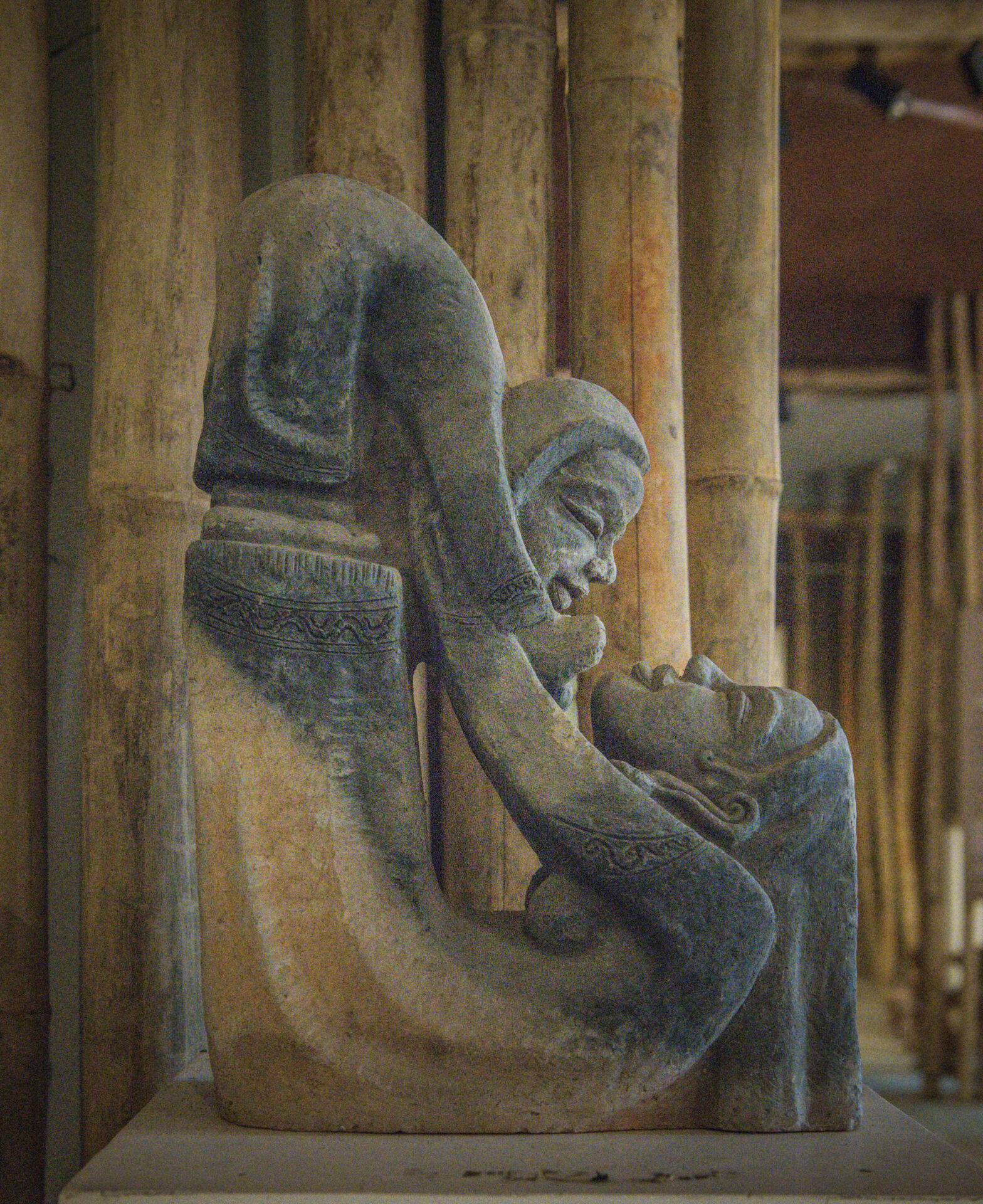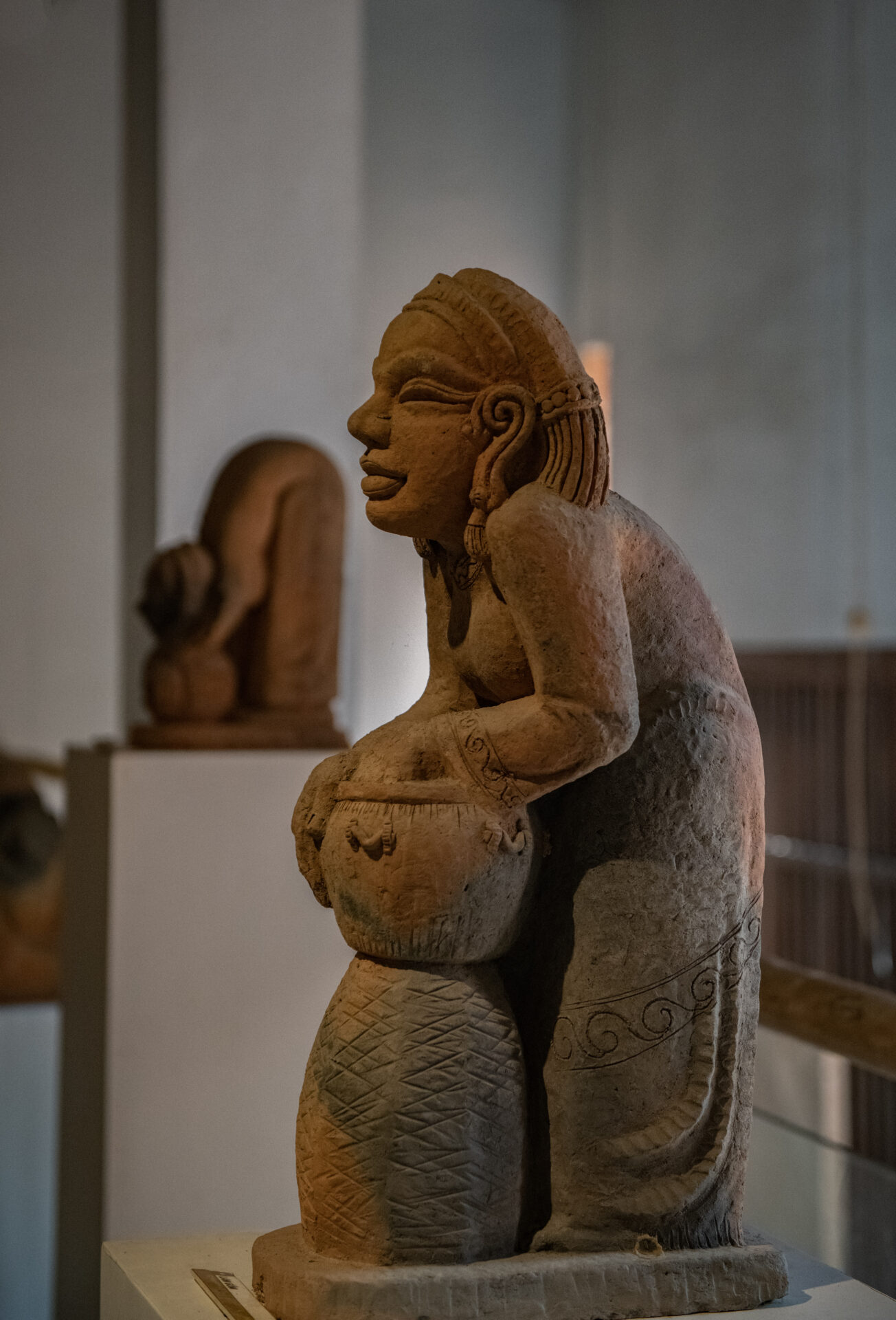Through the winding village roads, visitors can encounter familiar images of traditional pottery villages such as Vinh Long, Lu Cam, Bau Truc, Phuoc Tich, Huong Canh, Phu Lang, M'nong.
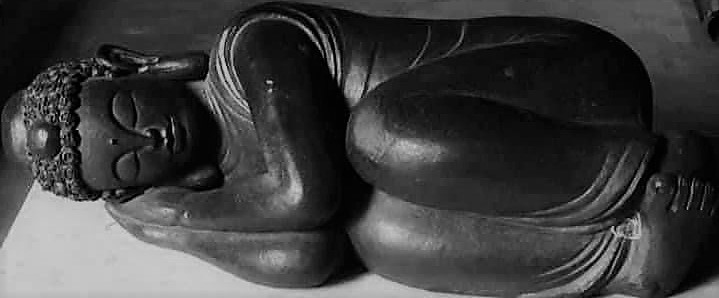
PHU LANG Pottery Village
Phu Lang pottery is covered with a layer of glaze with eel-skin-colored patterns that looks elegant and durable.
Geographical location
Phu Lang pottery village is located in Phu Lang commune, Que Vo district, Bac Ninh province. Phu Lang is located on the Cau river and has many ferry piers that carry passengers back and forth all day long. The place name Phu Lang may have existed at the end of the Tran dynasty and the beginning of the Le dynasty. According to To Nguyen and Trinh Nguyen in the book Kinh Bac - Ha Bac, the founder of Phu Lang pottery was Luu Phong Tu. At the end of the Ly dynasty, he was sent by the royal court to China. During this trip, he learned the pottery craft and taught it to people in the country. At first, this craft was passed on to the residential areas on both banks of the Luc Dau river and then moved to the Van Kiep area (Hai Duong). Around the beginning of the Tran dynasty (13th century), the craft was passed on to Phu Lang land.
Characteristic
The raw material to create Phu Lang pottery products is light pink clay from Thong Vat village, Cung Kiem (Viet Thong commune). Different from Tho Ha pottery. Now the decorative colors have been richly modeled such as white, red, black, ... made from natural materials. After being purchased, the clay is transported to Phu Lang by large boat. Through many stages, the clay is smoothed and then shaped on a turntable by the craftsman's hands. The main products of ancient Phu Lang pottery are jars, earthenware teapots, flower pots, and earthenware urns.
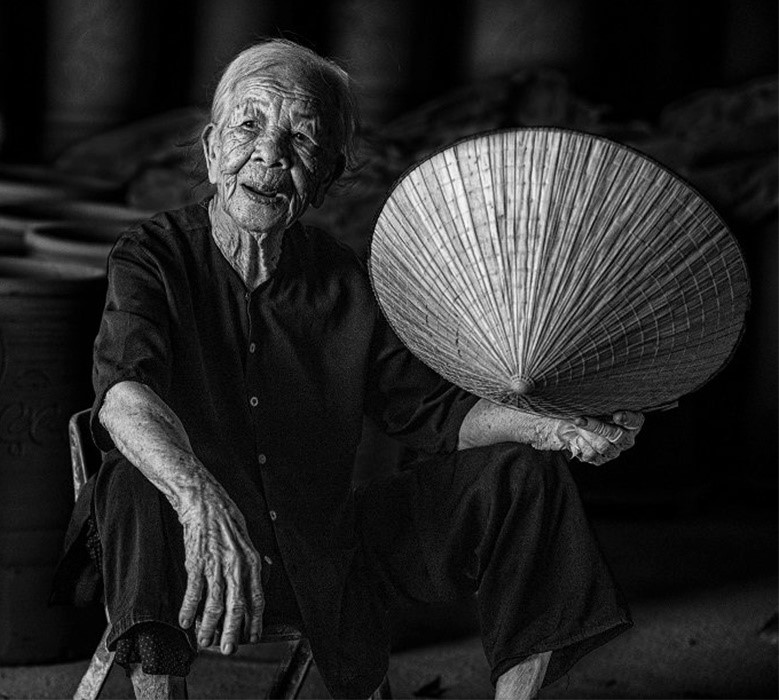
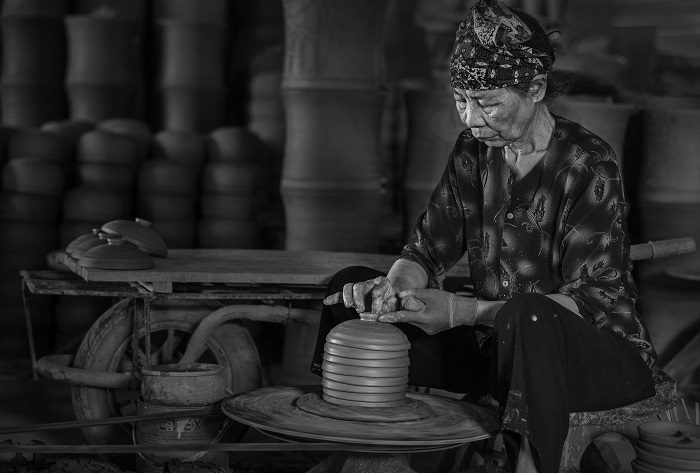
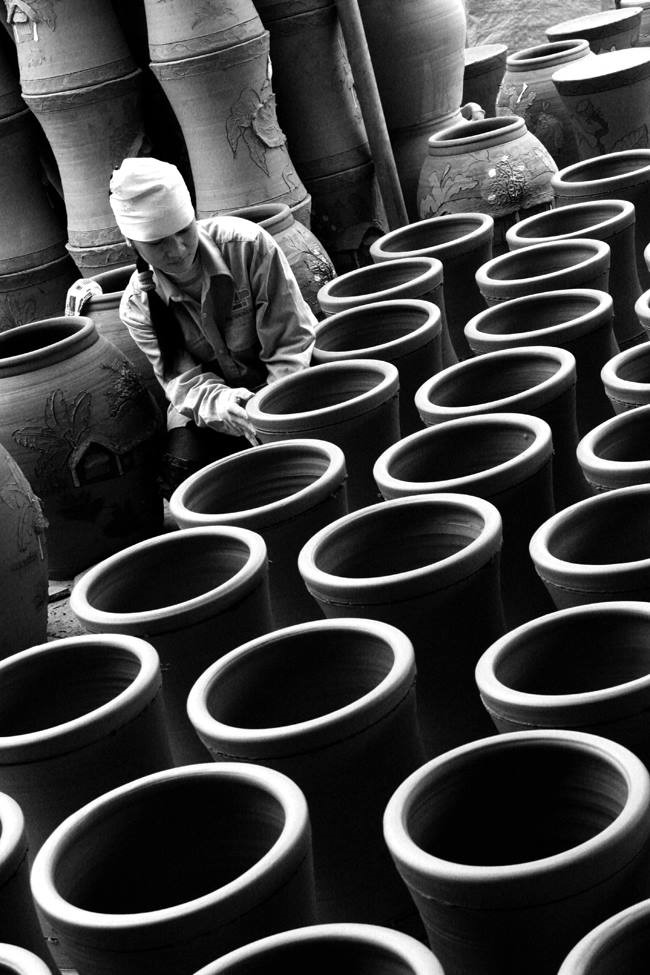
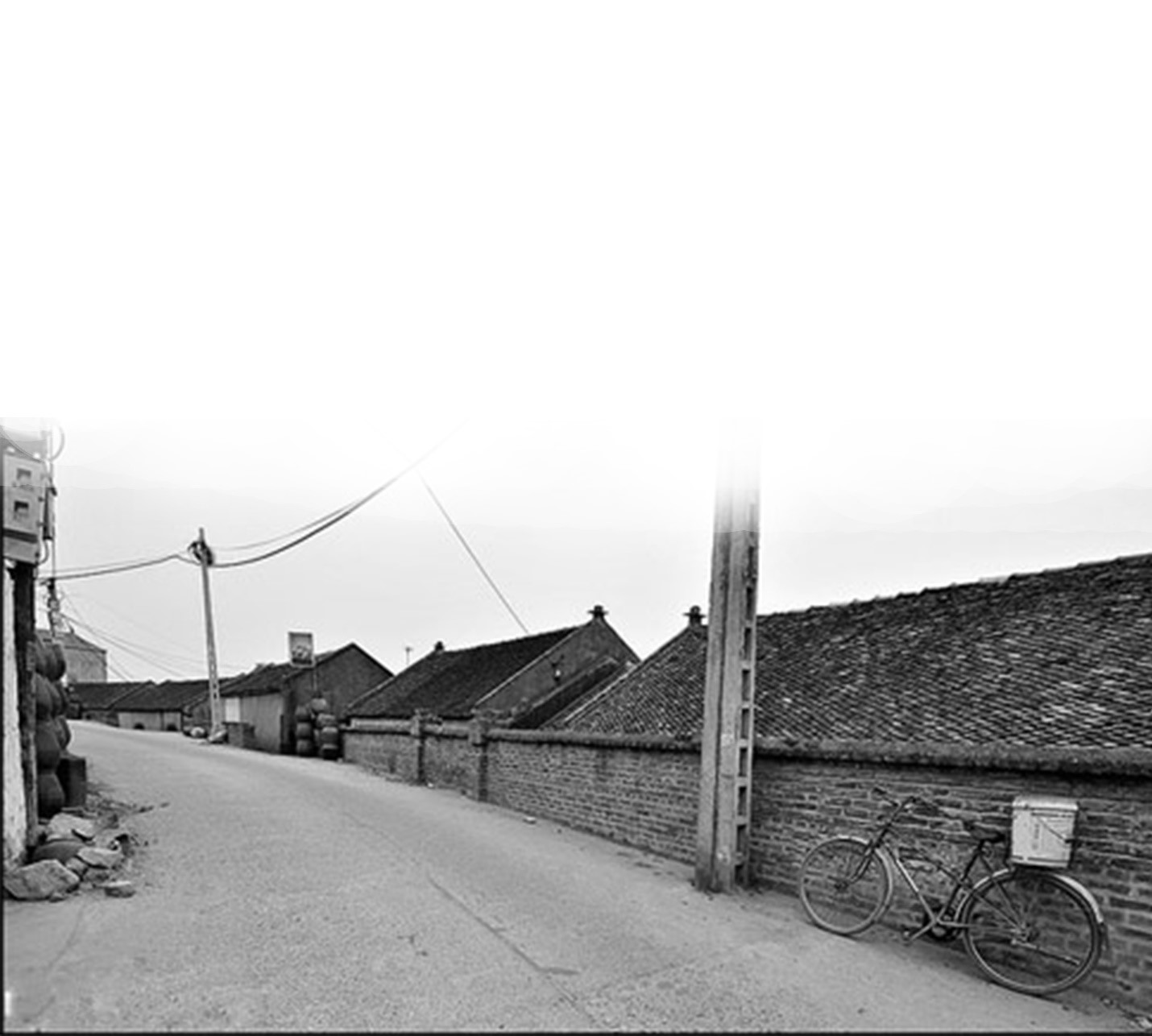
PHUOC TICH Pottery Village
Phuoc Tich pottery village has a powerful history of formation and development.
Geographical location
Phuoc Tich ancient village is located in Phuoc Phu hamlet, Phong Hoa commune, Phong Dien district, Thua Thien - Hue province, Vietnam. The village was established in 1470, in the early years of the second wave of migration to Thuan Quang region, after the 1471 Champa pacification under the reign of King Le Thanh Tong. About 500 years ago, this area was called Con Duong, surrounded by the O Lau river, which curves in the shape of a horseshoe. Because the village had no fields, the villagers made pottery as their main occupation to earn a living. King Gia Long himself named the village Phuoc Tich.
Characteristic
Phuoc Tich pottery is fired very carefully, the kiln is solidly built with high heat, the fire is always red, thanks to that the product does not crack and helps to retain heat and flavor. Phuoc Tich pottery products are famous everywhere, not only because of their durability but also because no two are alike, with very different colors. After firing, although the products are not glazed, they still have a layer of glaze on the outside, which is not absorbed. In particular, Phuoc Tich pottery products are also used to present to the king, the most famous are the "royal pots" used to cook rice for the king.
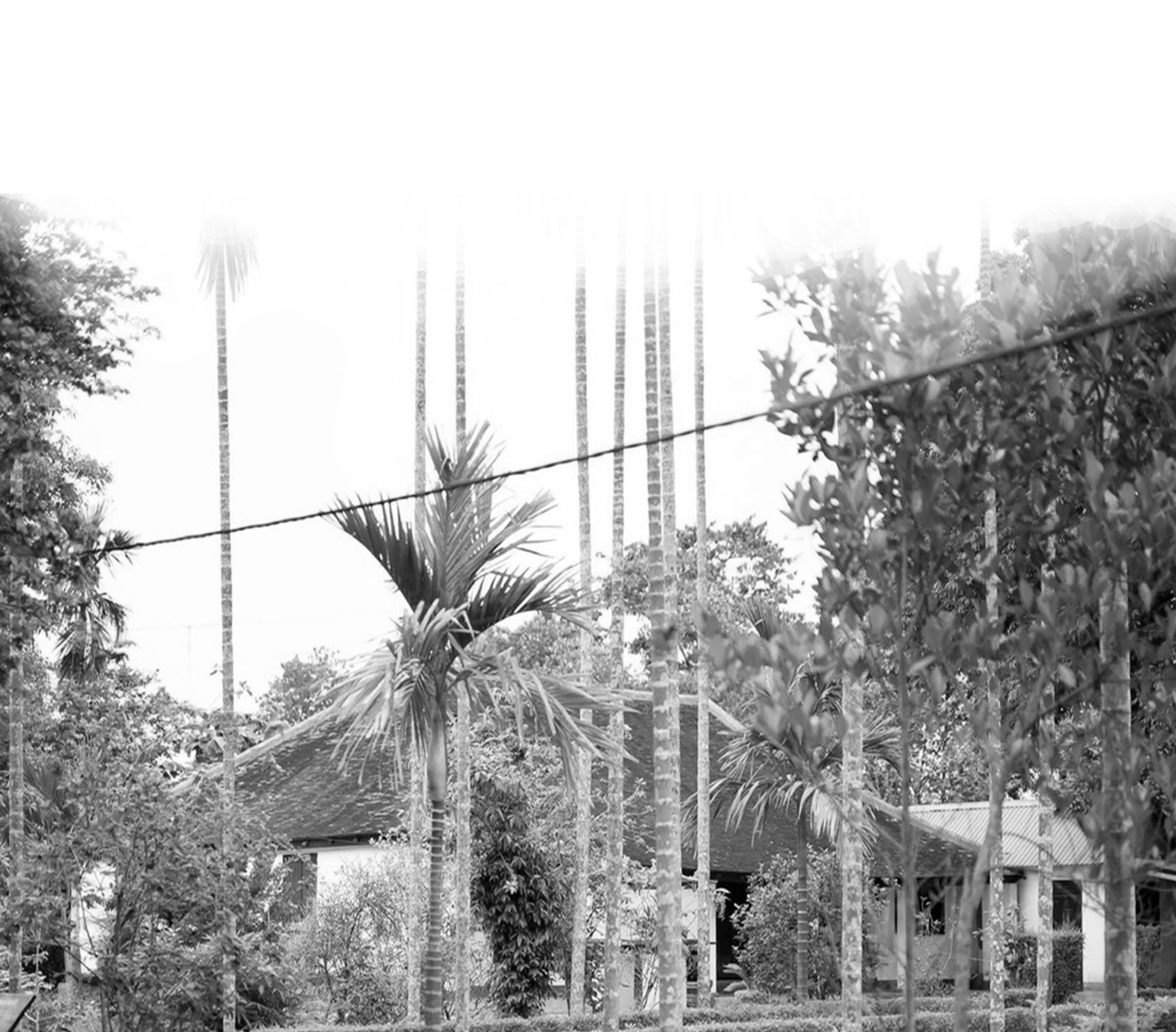
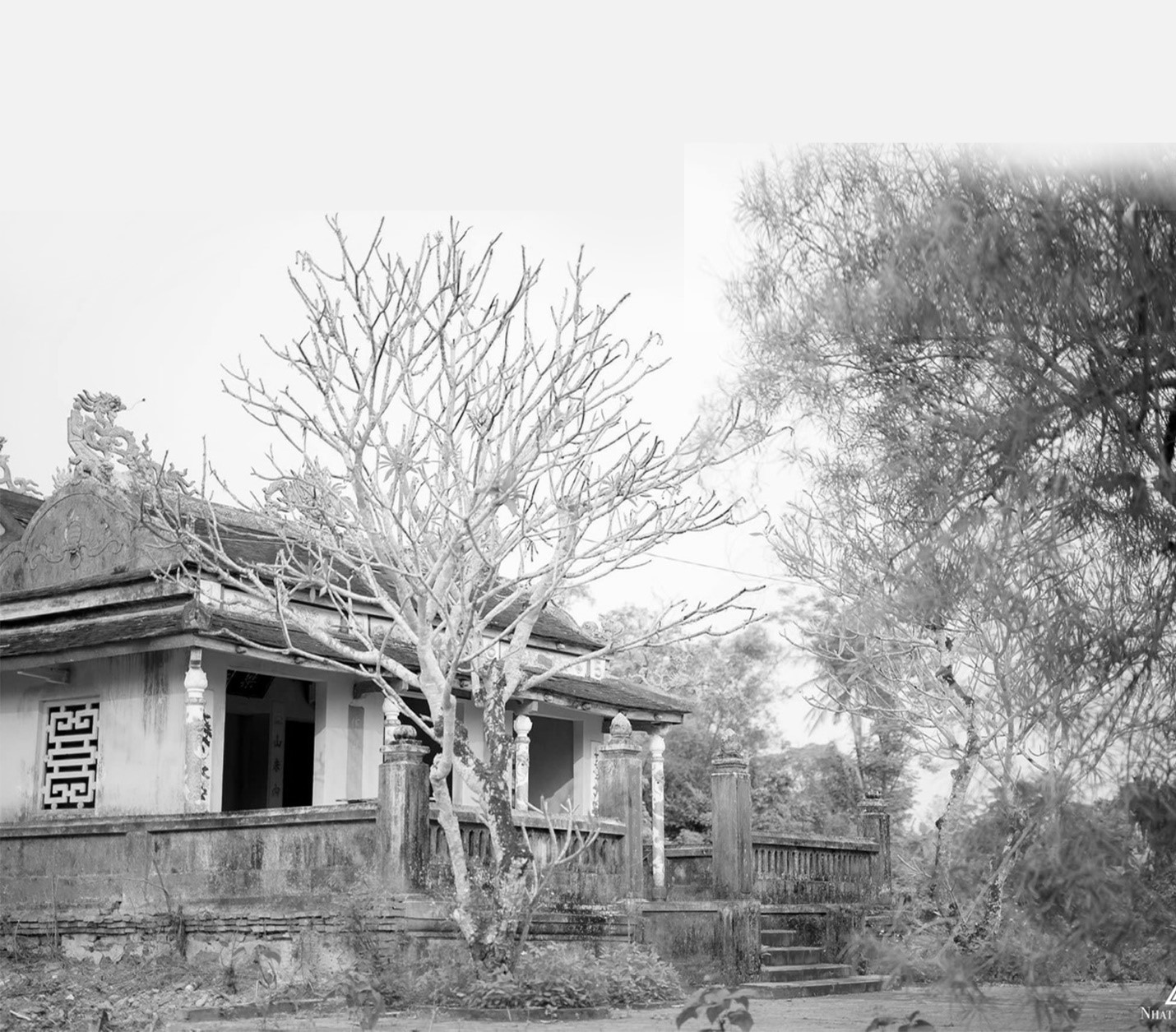
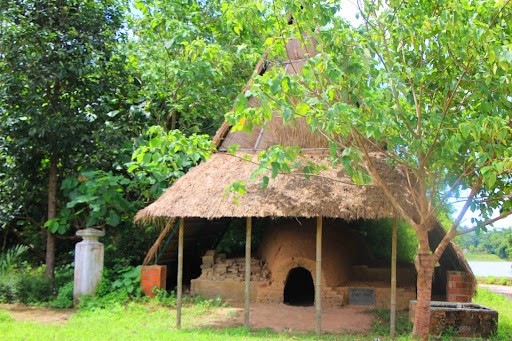
MANG THIT pottery village
Mang Thit Pottery Village, also known as the “Red Kingdom”, is located in Vinh Long province, a province located in the center of the Mekong Delta.
Geographical location
, between Tien River and Hau River, has a large reserve of alum clay, occupying 69% of area. Thanks to the high quality, most fertile soil in the region, Vinh Long has had the conditions to form and develop the brick and tile industry for over 50 years. In particular, Vinh Long is also known as a famous place for producing red ceramics in the country, exporting to many countries around the world.
Characteristic
Although born later, the pottery village in Vinh Long has its own unique features, which is unglazed pottery, without the dark color of bricks and tiles. The crystallization of three very unique traditional cultures between the Kinh, the Chinese and the Khmer has created different pottery products for Vinh Long. Vinh Long pottery has a natural pink color, after firing, it turns a light white powdery layer on the outside like mist. Vinh Long is also famous for its "unique" houses built entirely of red pottery and kiln structures like terracotta citadels reflecting on the banks of the Co Chien River.
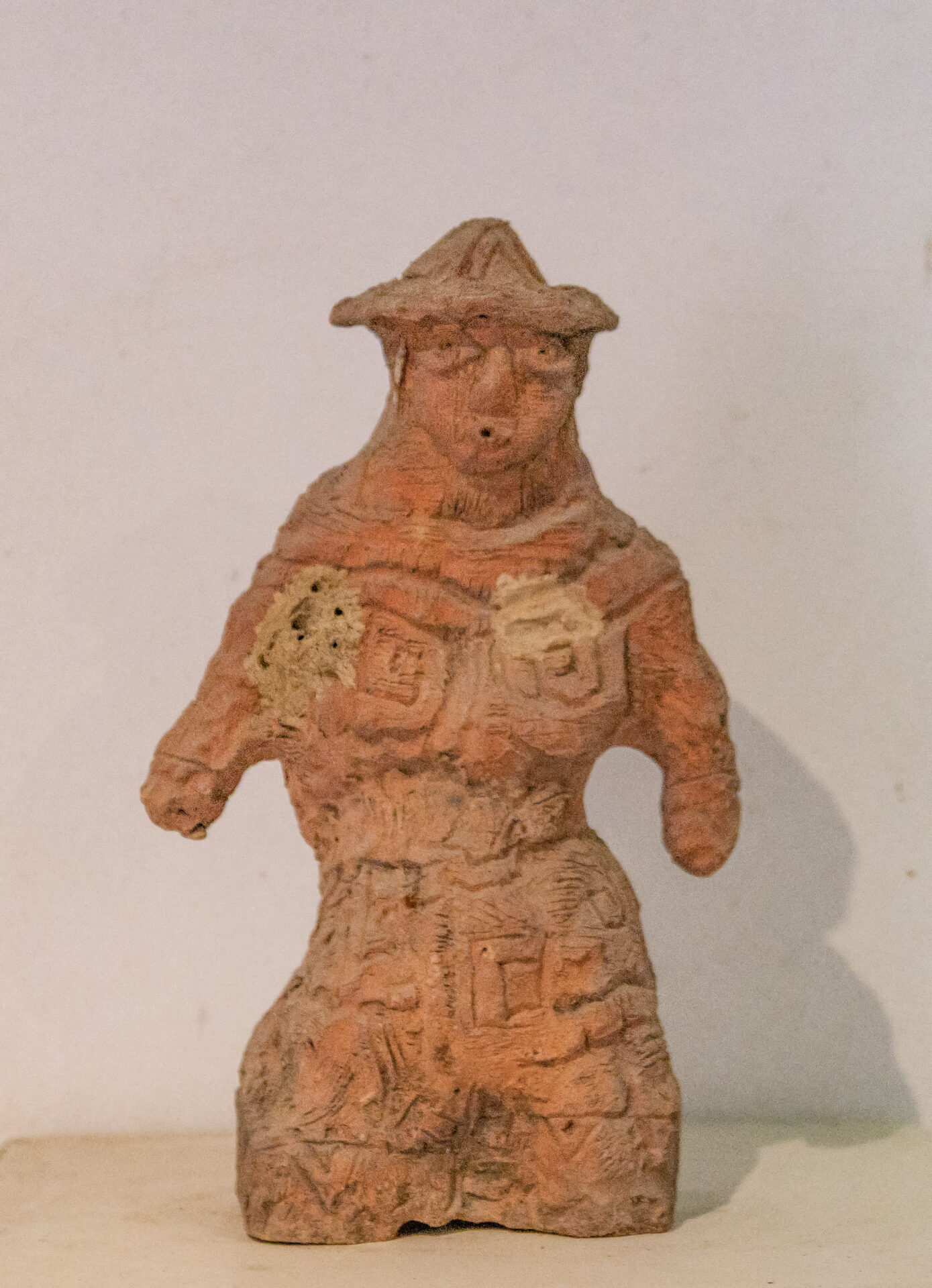
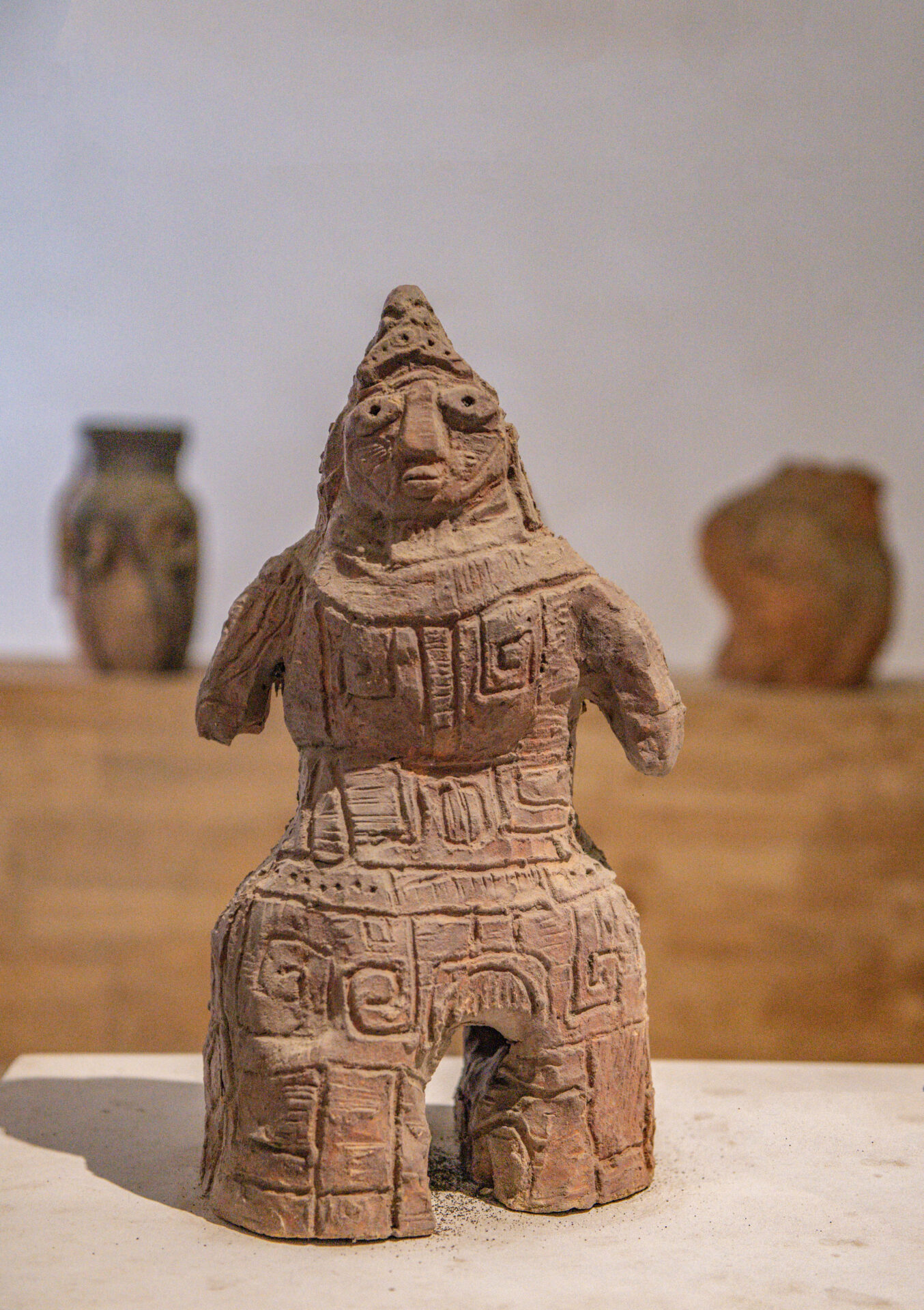
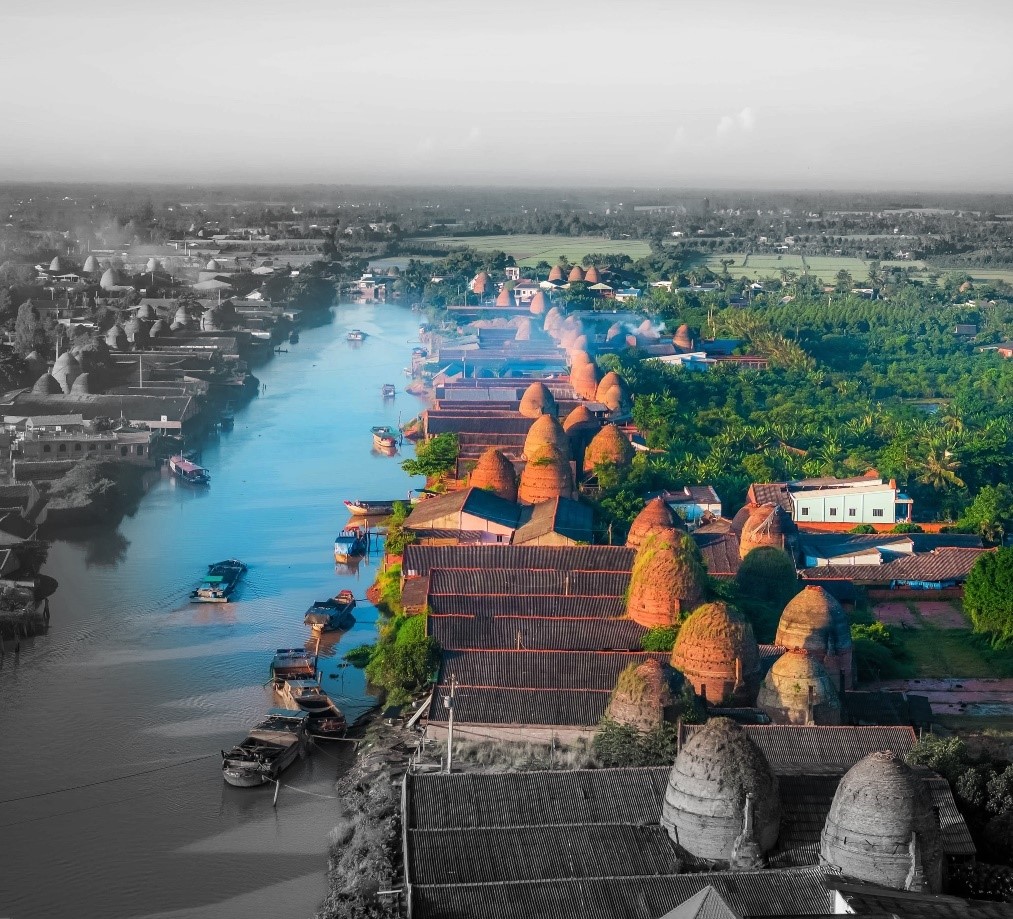
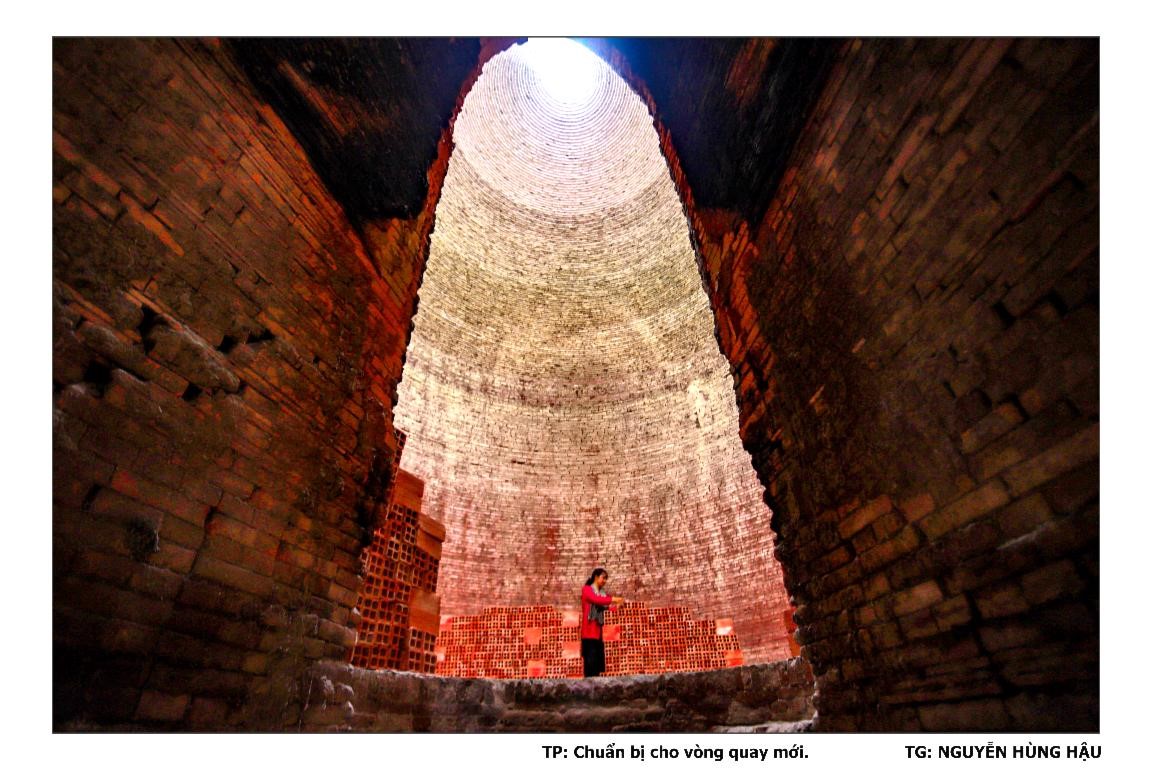
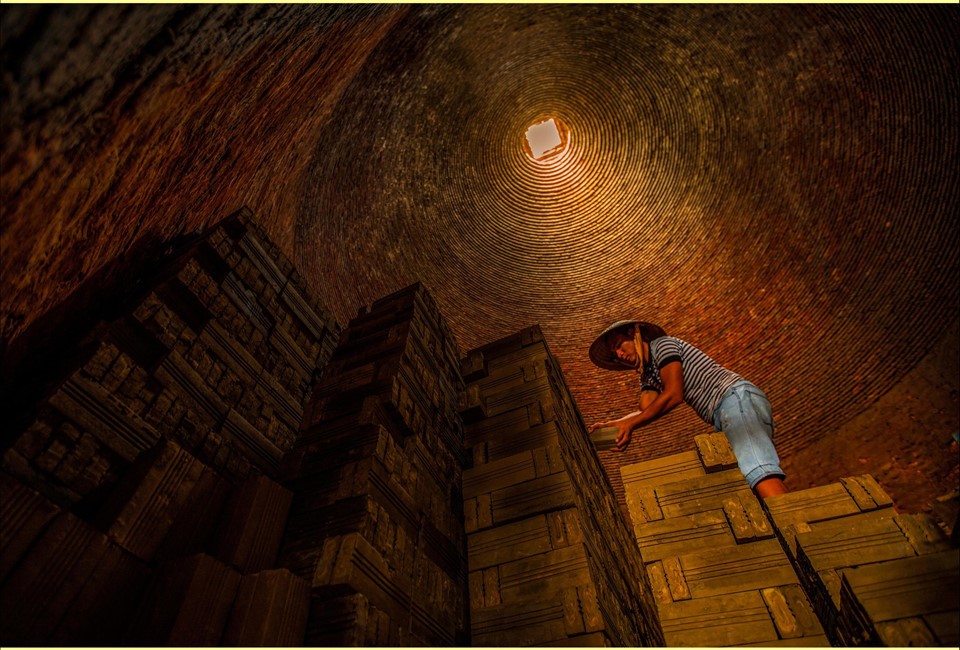
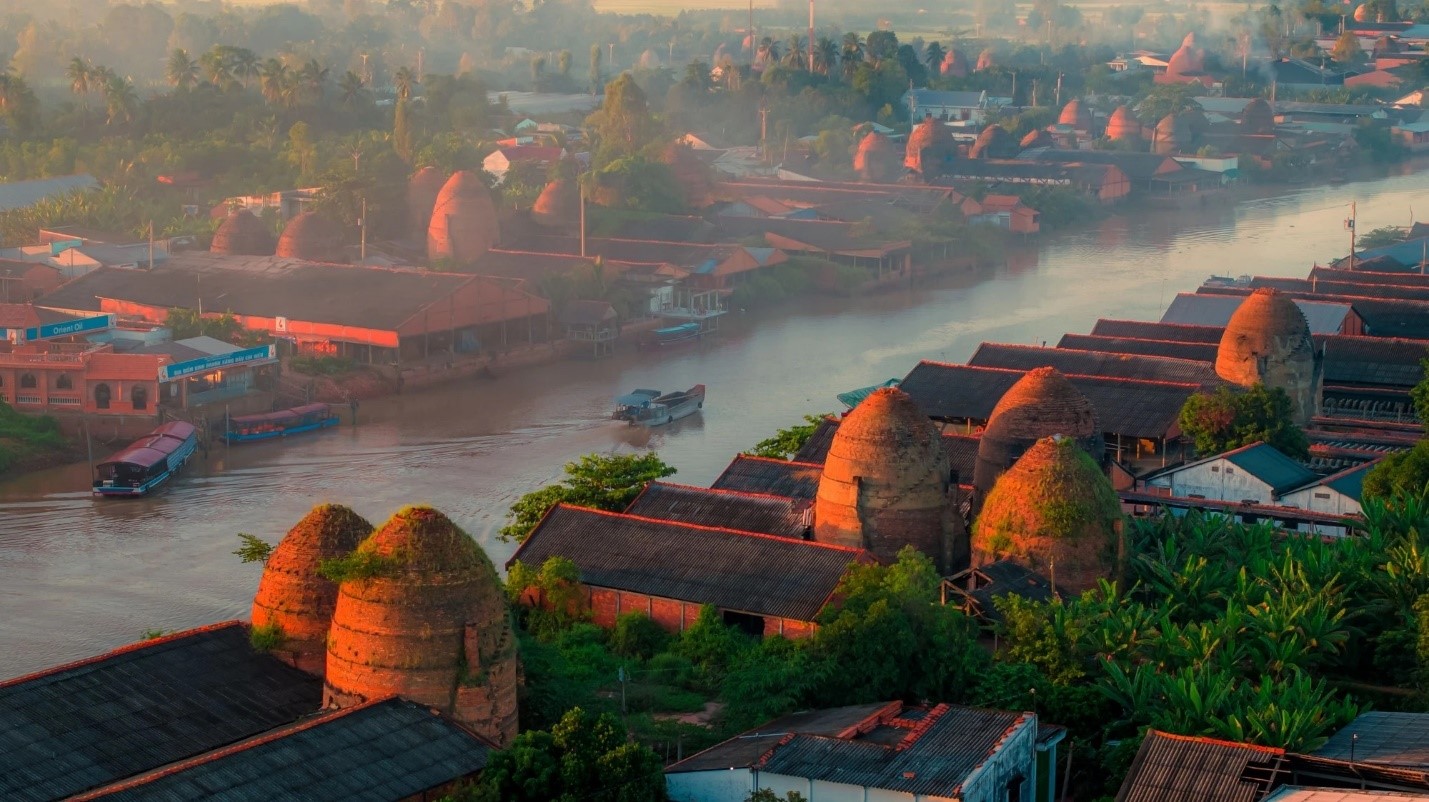
BAU TRUC Pottery Village
As one of the two oldest pottery villages in Southeast Asia, Bau Truc is also considered a museum of traditional pottery of the Cham people.
Geographical location
Bau Truc pottery village (in ancient Cham language called Paley Hamu Trok, meaning "sunken village, protruding at the end of the riverbank") is located in Phuoc Dan town, Ninh Phuoc district, Ninh Thuan province. According to legend, the pottery craft was taught to Cham women by the ancestor Po K'long Chank and his wife in ancient times. Bau Truc pottery is made entirely by hand, with rudimentary modeling tools, and the potters are all women, while men only participate in stages such as pounding the soil and firing the pottery.
Product Features
The potters shape the products with their skillful hands and steps around the round stone pillars, not relying on a turntable. The decorative patterns on Bau Truc pottery are carved or embossed lines bearing the strong Cham Pa culture. Traditional Bau Truc Cham pottery has a red-yellow, pink-red color, mixed with brown, gray-black streaks. If held up to the light, you will see the shimmering light yellow spots in the pottery because the pottery here is not made purely from clay, but when made, the clay is mixed with a part of young sand taken from the streams flowing from the source, the sand there contains a lot of mineral sand. Water or food stored in Bau Truc pottery products does not spoil quickly and is always cooler than the outside temperature.
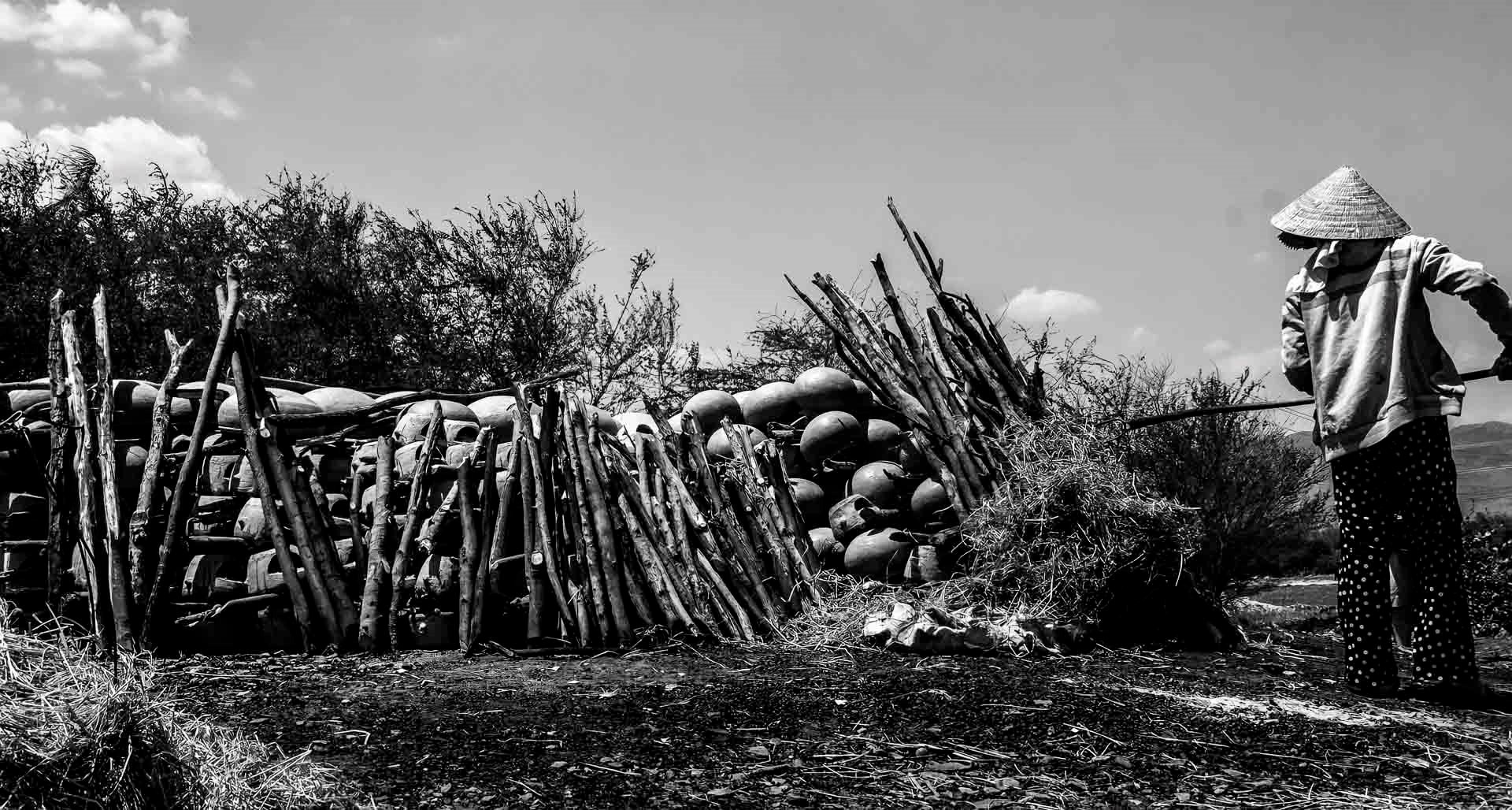

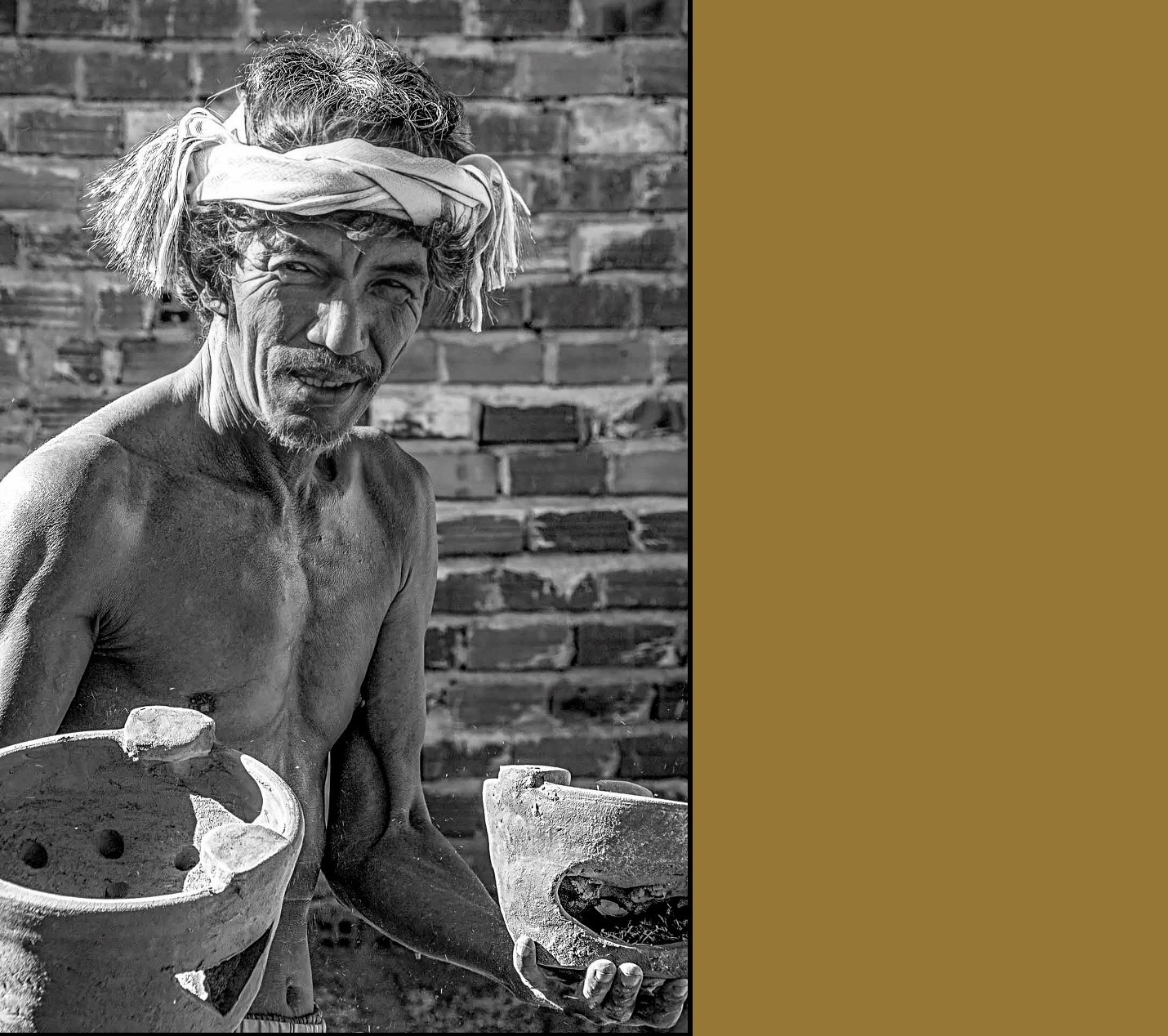
M'NONG Pottery Village
. For the M'Nong people, pottery is passed down from mother to child, with women taking on the role of making pottery from the time of collecting the clay until it is fired into a product.
Geographical location
Ancient pottery village of the M'nong people inDong Bac village, Yang Tao commune, Lak district, Dak Lak province Shaking is currently the only remaining ancient pottery village of the M'nong Rlam people in the Central Highlands.Therefore, M'Nong women play a key role in preserving and promoting their ethnic group's traditional pottery craft.
Characteristic
The raw material for making pottery is clay that is pounded finely with a mortar, not mixed with any other materials, and is taken from Dak Sang (where there is clean water). M'nong pottery is molded by hand (without using a turntable) and the potter will move around the product, using thinly shaved bamboo sticks and wet cloth to shape it. The rough product is left to drain, then the potter uses a stick to draw patterns and motifs, rubs the surface with a pebble to make it shiny, and then continues to dry in the shade. The pottery product is fired in the open air for about 1-2 hours and is immediately buried in rice husks. The burnt rice husks create smoke, this smoke sticks to the pottery and blackens it. Products that are carefully polished in the previous stage will have a very black and shiny surface, looking like metal. This is the characteristic color of M'nong pottery and is the difference compared to other types of pottery.



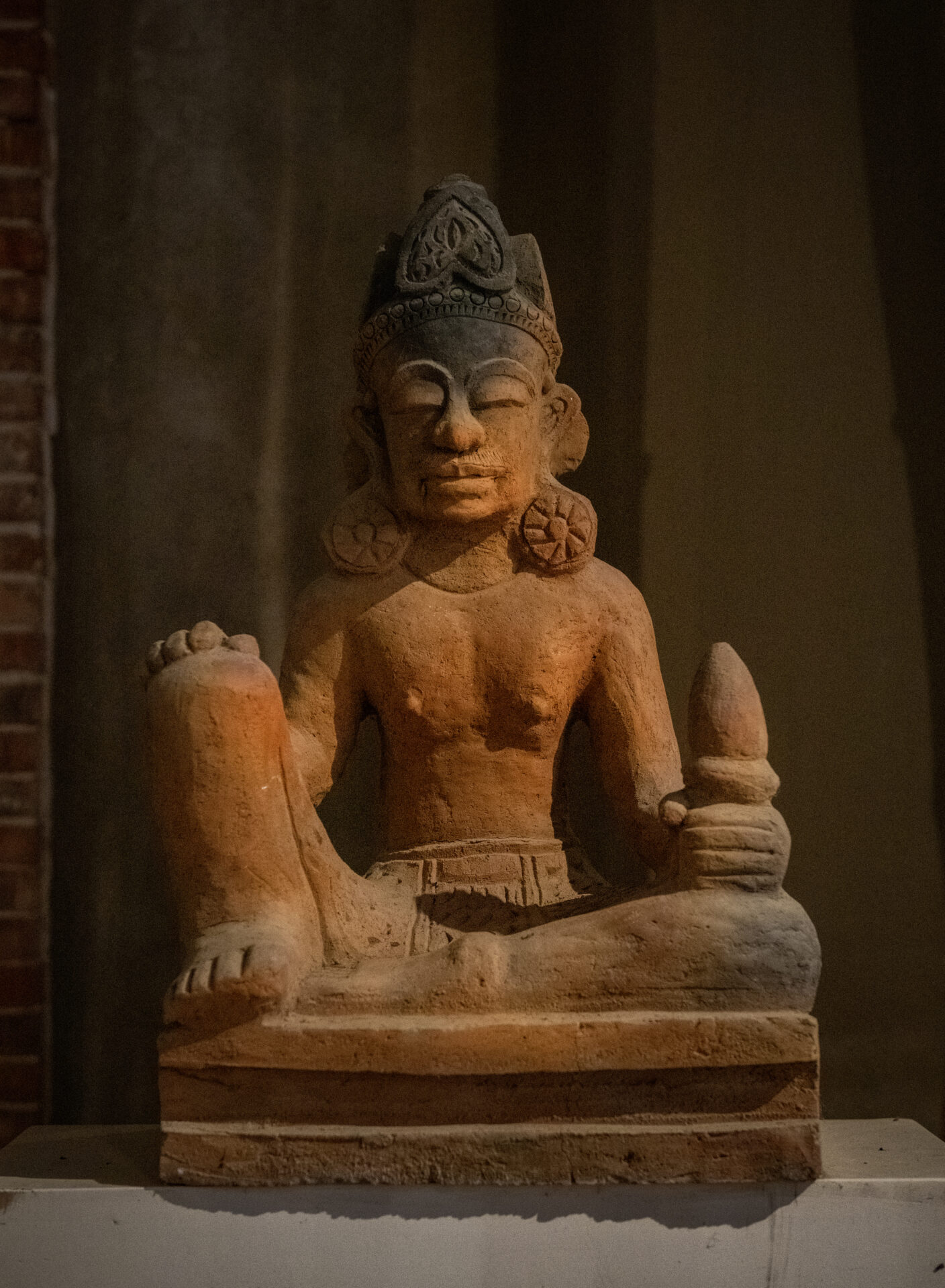
HUONG CANH Pottery Village
Geographical location
Huong Canh Pottery Village is over 300 years old and is an ancient pottery village in the Northern Midlands region.
Huong Canh pottery village is now located in Dai Dong hamlet, Huong Canh town, Binh Xuyen district. Huong Canh is located in the pottery production area of Vinh Phuc pottery center. The pottery production area is concentrated in Lo Cang hamlet, located near the river junction created by the confluence of Phan river and Con river.
Characteristic
Huong Canh pottery is a rough, rustic earthenware with a burnt earthenware color that is resistant to water penetration, prevents light, and maintains the flavor of the things inside. What makes Huong Canh pottery different is the green earthenware with high smoothness and few impurities. When fired, it often makes a clinking sound when tapped, similar to when we touch metal.
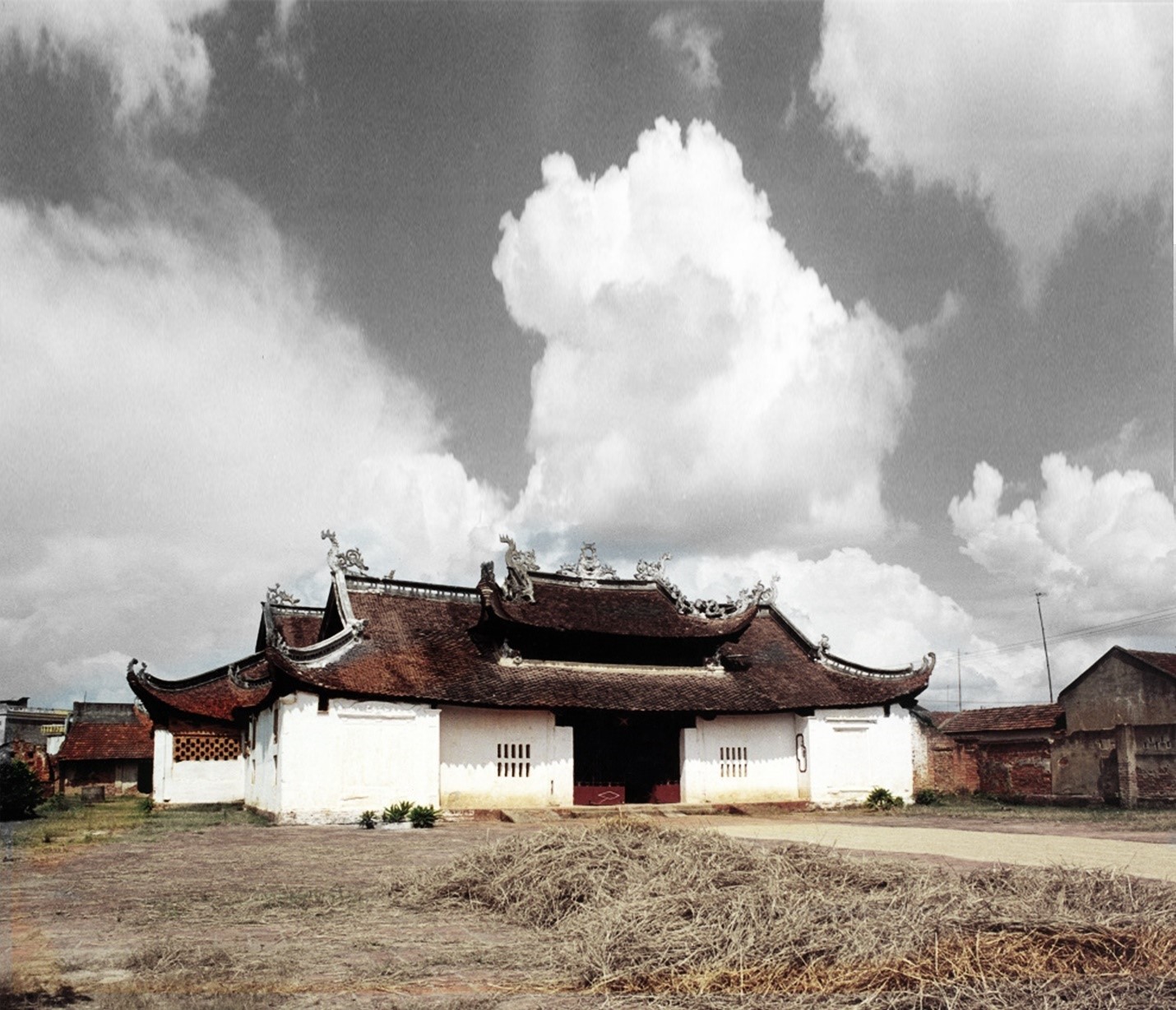

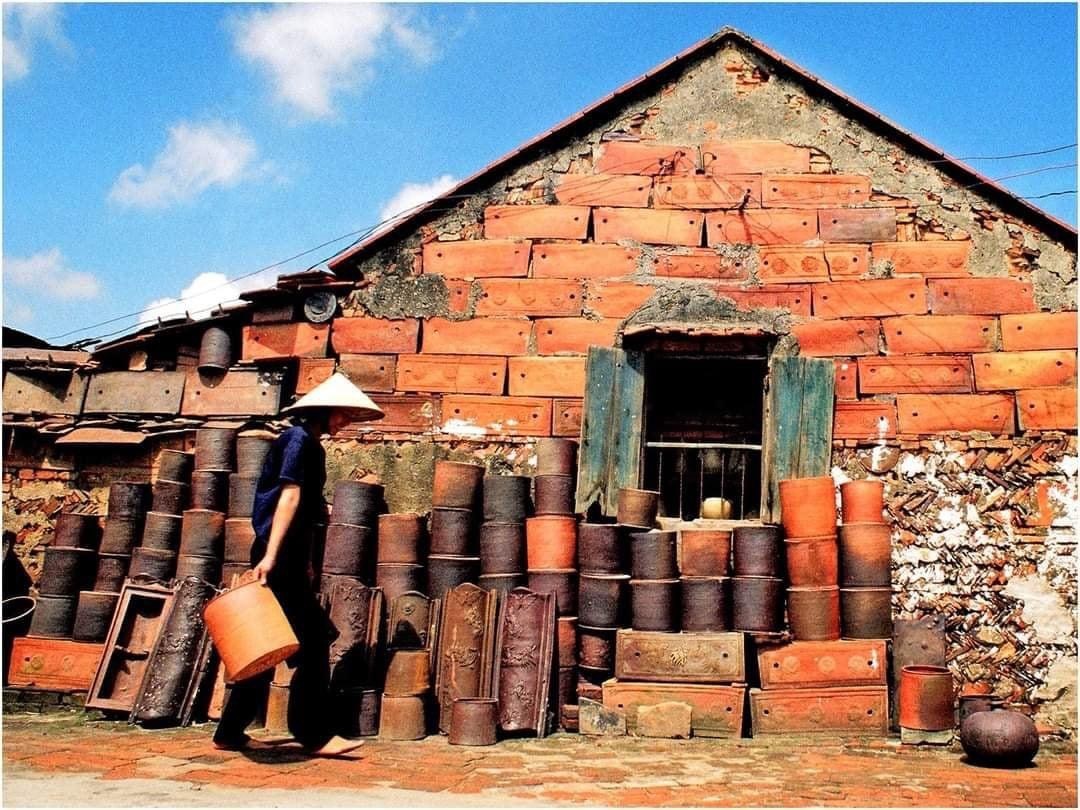
LU CAM pottery village
Geographical location
Currently, Lu Cam communal house still preserves 3 royal decrees of the Nguyen Dynasty to the founder of the pottery profession and the predecessors who contributed to the development of Lu Cam pottery profession.
Lu Cam pottery village in Lu Cam hamlet, Ngoc Hiep commune, Nha Trang city is an old craft village established in the early 19th century. At that time, waterway transportation was very prosperous, Lu Cam pottery village located on the banks of Cai river produced a variety of ceramic products such as jars, pots, vases, vases... which were brought by boat to sell throughout the South Central Coast. The typical product of Lu Cam pottery is the clay kiln.
Characteristic
Lu Cam pottery uses Vinh Thanh clay, so it has a beautiful red and pink color and a long life. The clay is mixed, kneaded with water until smooth, then divided into small parts, each part is enough to create a kiln, then used to print in a mold. When removing the kiln body from the mold, the potter will attach the kiln handles, make the kiln door and kiln lining.
